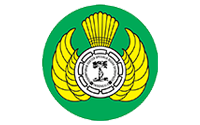Submissions
Submission Preparation Checklist
As part of the submission process, authors are required to check off their submission's compliance with all of the following items, and submissions may be returned to authors that do not adhere to these guidelines.- The submission has not been previously published, nor is it before another journal for consideration (or an explanation has been provided in Comments to the Editor).
- The submission file is in OpenOffice, Microsoft Word, RTF, or WordPerfect document file format.
-
The submission is original works (the similarity index should be less than 15%).
- The text adheres to the stylistic and bibliographic requirements outlined in the Author Guidelines, which is found in About the Journal.
- The author(s) are required to upload the Title Page, Copyright Transfer Agreement form, and Ethical Clearance (for Research Article) or Informed Consent (for Case Report) as supplementary files along with the manuscript submission to our journal.
Copyright Notice
- The author acknowledges that the copyright of the article is transferred to the Journal of Orthopaedi and Traumatology Surabaya (JOINTS), whilst the author retains the moral right to the publication.
- The legal formal aspect of journal publication accessibility refers to Creative Commons Attribution-Non Commercial-Share Alike 4.0 International License (CC BY-NC-SA).
- All published manuscripts, whether in print or electronic form, are open access for educational, research, library purposes, and non-commercial uses. In addition to the aims mentioned above, the editorial board is not liable for any potential violations of copyright laws.
- The form to submit the manuscript's authenticity and copyright statement can be downloaded here.
Journal of Orthopaedi and Traumatology Surabaya (JOINTS) is licensed under a Creative Commons Attribution-Non Commercial-Share Alike 4.0 International License.

























 Journal Orthopaedi and Traumatology Surabaya (JOINTS) (
Journal Orthopaedi and Traumatology Surabaya (JOINTS) (